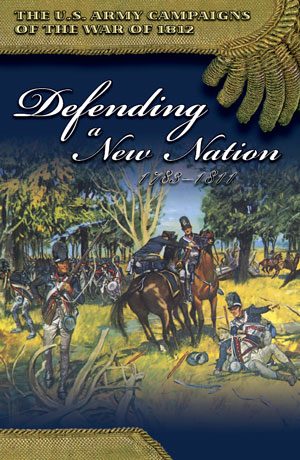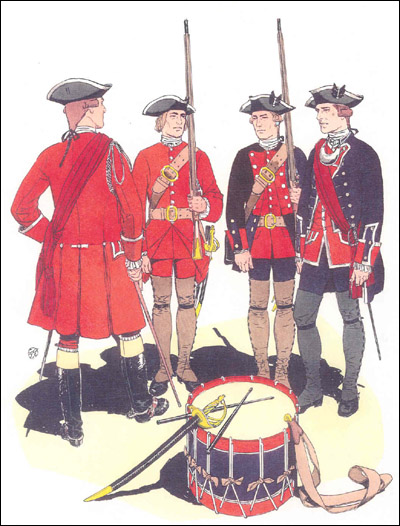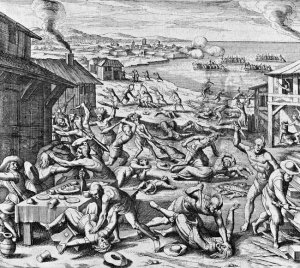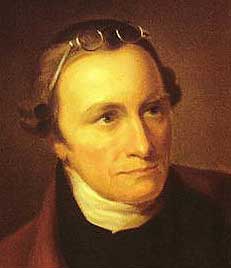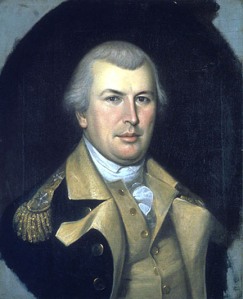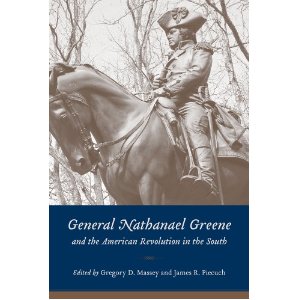My new book will have a great cover. It will be available from the History Press in mid-November.
October 10, 2013
September 27, 2013
Defending a New Nation, 1783-1811
Here is the link to my new publication on the US Army between the Revolutionary War and 1811:
http://www.history.army.mil/html/books/074/74-1/index.html
DEFENDING A NEW NATION, 1783-1811
John R. Maass
U.S. Army Campaigns of the War of 1812
CMH Pub 74-1, Paper
2013; 60 pages, maps, illustrations, further readings
GPO S/N: 008-029-00559-0
From the end of the Revolutionary War in 1783 to the beginning of the War of 1812, the nascent United States Army encountered significant challenges, both within its own ranks and in the field. The Army faced hostile American Indians in the west, domestic insurrections over taxation, threats of war from European powers, organizational changes, and budgetary constraints. It was also a time of growth and exploration, during which Army officers led expeditions to America’s west coast and founded a military academy. Defending a New Nation, 1783–1811, the first volume of the “U.S. Army Campaigns of the War of 1812” series, tells the story of several military campaigns against Indians in the Northwest Territory, the Army’s role in suppressing the Whiskey Rebellion (1794), the Quasi-War with France and confrontations with Spain, the influence of Jeffersonian politics on the Army’s structure, and the Lewis and Clark expedition.
June 4, 2013
2013 Braddock Road Preservation Society Meeting
The Braddock Road Preservation Society has made its plans for their annual Nov. meeting in Western Penn.
To see the program, click here. I attended last year (the bus tour only) and enjoyed it.
May 10, 2013
1755 Braddock Campaign Tour in September
See information here about an interesting tour of Braddock’s Campaign during the French and Indian War. The description is:
The astute observer of 18th century events and British Whig politician, Horace Walpole observed, “The volley fired by a young Virginian in the backwoods of America set the world on fire.” Walpole’s words ring true. The Virginian he was referring to was, of course, a 22-year old militia major named George Washington. Washington’s actions in western Pennsylvania are credited with starting the French and Indian War in America. Besides George Washington, Braddock’s Campaign of 1755 will introduce many personalities who became famous during the American Revolution: Daniel Morgan, Daniel Boone, Thomas Gage, Charles Lee, Adam Stephen and Horatio Gates.
Cost is $495. The guide is Doug Cubbison, “a native of western Pennsylvania, is the author of four books on 18th century military history, including The British Defeat of the French in Pennsylvania in 1758, A Military History of the Forbes Campaign against Fort Duquesne. This will be his third tour for America’s History. Doug is a former U.S. Army field artillery officer, was a historian with the U.S. Army 10th Mountain Division, Fort Drum, New York and the U.S. Army Combat Studies Institute, Fort Leavenworth, Kansas. He is a popular speaker at Fort Ticonderoga’s War College and an experienced leader of staff rides.”
April 13, 2013
Washington’s Books Return to Mount Vernon
George Washington’s Books Return to Mount Vernon from Scotland
Scotland’s First Minister Loans Book to New Library
MOUNT VERNON, VA – Today the First Minister of Scotland, Alex Salmond, hand-delivered books originally from George Washington’s library to Mount Vernon. The National Library of Scotland is helping to complete a recreation of George Washington’s original book collection in the Fred W. Smith National Library for the Study of George Washington, set to open September 2013. The books will be on loan to Mount Vernon from the National Library of Scotland.
“As a man who was driven to improve on his poor education as a child, Washington’s love of reading was voracious and topics covered everything from animal husbandry to Greek history,” said Alex Salmond, First Minister of Scotland. “Prominent however was his interest in all things Scottish and he held many volumes which reflected this, including works by Burns.”
“It is therefore only fitting that we should help realise the dream to house all of his papers on his magnificent estate at Mount Vernon. I am honoured to be able to present these two volumes from the National Library of Scotland on loan to the library to help realise this wish.”
As part of Salmond’s visit to Mount Vernon, the First Minister toured Washington’s estate with Stewart D. McLaurin, Vice President for The Fred W. Smith National Library for the Study of George Washington. During a moving tribute performed by a bagpiper, the First Minister laid a wreath at the tomb of Washington. Following the wreathlaying, Salmond presented the books from the National Library of Scotland to Mount Vernon’s president, Curt Viebranz during a private ceremony.
“George Washington had a multitude of long-lasting Scottish influences throughout his life,” said Curt Viebranz. “It is an honor and privilege for his Estate to again work with the Scottish people, through the generosity of the National Library of Scotland and the Scottish Government, to help recreate Washington’s library.”
The books presented to Mount Vernon are two volumes entitled the “Official Letters to the Honorable American Congress, Written, During the War between the United Colonies and Great Britain, by His Excellency, George Washington, Commander in Chief of the Continental Forces (London: 1795).” In 1795, John Carey, editor of ‘Official letters’, sent these volumes to President Washington with manuscript remarks.
This unique copy of ‘Official letters’ was donated to Scotland’s national collection in 1938 by the family of Hugh Sharp, a bibliophile and wealthy jute manufacturer.
February 26, 2013
The Barbarous Years: The Shocking Savagery of America’s Early History
The March 2013 edition of The Smithsonian Magazine has an article on “The Shocking Savagery of America’s Early History.” The piece (on-line here) tells us that Bernard Bailyn is the “greatest historian of early America alive today.” How one measures that we are not told. It goes on to report that he’s “now over 90 and ensconced at Harvard for more than six decades,” and “has recently published another one of his epoch-making grand narrative syntheses, The Barbarous Years, casting a light on the darkness, filling in the blank canvas with what he’s gleaned from what seems like every last scrap of crumbling diary page, every surviving chattel slave receipt and ship’s passenger manifest of the living and dead, every fearful sermon about the Antichrist that survived in the blackened embers of the burned-out churches.” Yes that was a run-on sentence.
In his new book Bailyn “has not painted a pretty picture. Little wonder he calls it The Barbarous Years and spares us no details of the terror, desperation, degradation and widespread torture—do you really know what being “flayed alive” means? (The skin is torn from the face and head and the prisoner is disemboweled while still alive.)” Do we really need this breathless prose here? No.
What has happened to reporting? Is it all about how smarmy/cute/egocentric the writer has to be these days, rather than tell readers what is going on? But even more—-are any informed Americans really “shocked” at how savage early America was? They should not be.
February 25, 2013
Road to Revolution State Heritage Trail Announces Major Expansion
The road to American independence was a long one, built on determination and sacrifice. The ideals of the American Revolution — embodied in the Declaration of Independence — continued to evolve even after the nation’s birth.
The foundations of religious liberty were laid early, beginning with the First Great Awakening in the 1720s and stretching to the passage of the Virginia Statute for Religious Freedom in 1786, followed by adoption of the First Amendment five years later. Personal liberties and political equality, both cornerstones of the Revolution, did not spread to all citizens for years. Women and individuals of African descent, for example, did not begin fully benefiting from the promise of the Declaration of Independence until as late as the 20th century. The fight to uphold these ideals resurfaces still today.
The path to political independence — the struggle to separate the colonies from the British Empire — began long before the first shots were fired at Lexington and Concord on April 19, 1775. As John Adams later wrote: “The revolution was affected before the War for Independence commenced. The revolution was in the minds and hearts of the people.” Adams believed the seeds of revolution were planted at least a decade before, as issues of security, taxation, representation, and political authority stirred American opposition. Independence — proclaimed on July 4, 1776, and completed in 1783 — came only after significant sacrifice in blood and suffering.
Thus, the road to the American Revolution — and the accompanying revolution inside the people — was protracted and arduous, extending into the modern era. Please travel this road, and encounter its many signs and footmarks, around Virginia.
For more information about the Road to Revolution State Heritage Trail, visit http://www.roadtorevolution.com/. Its social media addresses are www.facebook.com/roadtorevolutionva and www.twitter.com/rdtorevolution.
February 22, 2013
237th Anniversary of Battle of Moores Creek Bridge (1776)
North Carolina’s first major Revolutionary War battle, fought in 1776, will be celebrating its 237 anniversary this weekend.
According to the Southport Times:
Living historians will be on the battlefield during the celebration demonstrating the day-to-day life of a colonist along with musket and cannon firing demonstrations throughout the celebration. Family events, including children’s games, candlestick making, and a chance to dress up as a colonist will be available. Learn the significance of The Battle of Moores Creek and the important role North Carolinians played in the fight for freedom. This event is free to the public and promises to be fun for the whole family. BBQ and hot dogs will be provided by the Atkinson Fire Department.
Moores Creek National Battlefield will also be hosting lectures in Patriots Hall starting at 1:00 p.m. with Larry S. Earley, author of, “Looking for Longleaf: The Fall and Rise of an American Forest,” speaking about longleaf pines and the naval stores industry in colonial North Carolina. Special Superior Court Judge and Pender County native Gary E. Trawick, author of, “Born in Reconstruction: The Story of Pender County, 1524-2012,” will entertain the crowd with stories about the area’s impact on colonial North Carolina. These lectures are sure to showcase the rich history this area has to offer.
Moores Creek National Battlefield is located at 40 Patriots Hall Drive Currie, NC 28435. For a schedule of events please visit our website at http://www.nps.gov/mocr/event-schedule-2009-2010.htm.
February 19, 2013
Preserving Fort Ann’s 1777 Battlefield in NY
A Connecticut man who wants to use his property on Battle Hill as a mine said he will wait for a potential survey of the area for evidence of exactly where the Revolutionary War battle took place. But Gino Vona remained upset at being denied the opportunity to allow a Troy company to mine his land and suggested there was prejudice against him, because he is from out of town.
The three-hour battle took place July 7, 1777.
Read more here.
February 8, 2013
Women and the British General Hospital in North America 1754-1763
The current issue of Early American Studies, Fall 2012 Vol. 10.3, has an article titled:
“Tending the Army: Women and the British General Hospital in North America 1754-1763,” by Sarah Fatherly
This essay argues that the British Army’s North American general hospital and an increasingly large and diverse group of army women became not only connected but dependent on one another during the Seven Years’ War. This relationship derived from the Army’s reorganization of its medical services in a way that intentionally predicated the hospital’s operation and success on army women working for it, particularly as nurses. Both the medical staff and women attached to regular and provincial regiments realized benefits from this linkage; the hospital was able to cope with an increasingly large numbers of patients and women found that serving as nurses provided them with reliable access to regimental provisioning and security. Yet hospital personnel also increasingly had to regulate army women on behalf of the regiments, while women working for the hospital faced heightened dangers of illness, military attack, enemy capture, and death.
To obtain a copy of the issue, go to: http://eas.pennpress.org/strands/eas/abstracts.htm;jsessionid=A6C86CB4F4F519218F87FFBA3C063569
February 6, 2013
2nd Annual Conference on the American Revolution – March 22-24, 2013
Friday, March 22, 7pm-Sunday, March 24, Noon
Williamsburg Hospitality House
Williamsburg, Virginia
Edward G. Lengel, Head of Faculty: “Revolutionary Rivals: Horatio Gates and George Washington”
Douglas Cubbison: “Man on a Mission: John Burgoyne and the Campaign of 1777”
Joshua Howard: “The Swamp Fox: Francis Marion, Revolutionary War Hero of South Carolina”
James Kirby Martin: “Benedict Arnold: Revolutionary America’s Heroic General”
Andrew O’Shaughnessy: “Fighting with Friends and Enemies Simultaneously: Sir Henry Clinton”
Jim Piecuch: “Frustrated Ambitions: “Light Horse Harry Lee’s Conflicts On and Off the Battlefield”
John V. Quarstein: “Closing the Door on Cornwallis: The Battle of the Capes September 1781”
Glenn F. Williams: “Lord Dunmore’s War: Training Ground for Continental Officers”
Two Panel Discussions:
- “The Best and Worst Military Commanders of the Revolutionary War”
- “A Revolutionary War Bookshelf: What You Should Own and What Books will be Published Soon”
Optional Friday Bus Tour to Petersburg, Green Spring and Spencer’s Ordinary (includes lunch) led by William Welsch.
For more info click here.
January 7, 2013
General Nathanael Greene and the American Revolution in the South
Please note upcoming program in April in Washington, DC:
April 8: Free program with Dennis Conrad, John Maass and Jim Piecuch on “General Nathanael Greene and the American Revolution in the South,” the subject of a recent book from Univ. of South Carolina Press, in which each of these three historians have a chapter.
The speakers offer new perspectives on the character and military leadership of George Washington’s most trusted general, whose brilliance as a strategist and tactician reversed the course of the Southern Campaign.
Location:
The Society of the Cincinnati, 2118 Massachusetts Avenue, NW, Washington, DC 20008
Telephone: 202 785-2040
Time: 6:00 PM
http://www.societyofthecincinnati.org/events/public

